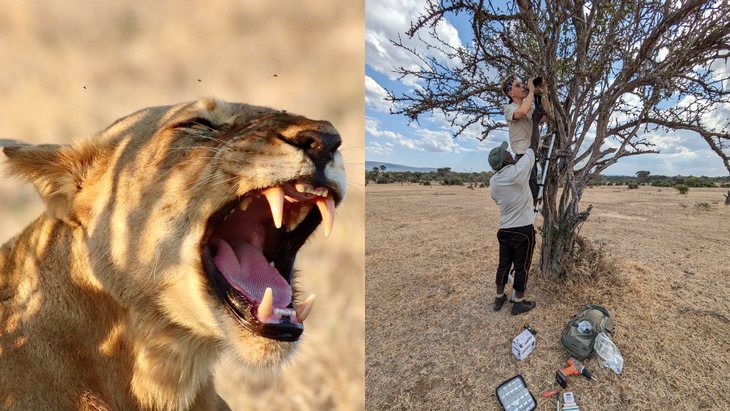
The new discovery was made by analyzing more than 3,000 recordings using artificial intelligence (AI), opening up a more precise approach to surveying and conserving lions - Photo: Growcott et al. 2025
Scientists have just announced a surprising discovery: in addition to the familiar loud roar, African lions also possess a form of "intermediate roar", which is shorter, deeper and always appears right after the loud roar.
According to a research team led by Jonathan Growcott, a PhD student at the University of Exeter (UK), this discovery challenges the long-held notion that lions have only one type of roar. "The full-voice roar is a sound, loud, complex and variable in pitch, while the intermediate roar is softer, less variable," Growcott said.
AI reveals previously unknown roar
To conduct the study, the team deployed 50 specialized microphones in Nyerere National Park (Tanzania) and attached acoustic sensors to the collars of five lions in Bubye Reserve (Zimbabwe). Over 60 days, they recorded 3,149 roars from African lions (Panthera leo).
The AI was then used to analyze and classify the sounds with more than 95% accuracy, eliminating the subjectivity in how humans describe roars. As a result, scientists have for the first time identified intermediate roars, a sound previously "mixed" with loud roars.
In addition to roaring, lions also produce other vocalizations such as growling, groaning, and meowing, but only roars contain individual identifying information, including sex, age, and physical characteristics. Therefore, accurately isolating each roar type plays an important role in population studies.
Growcott said the AI model not only helps identify individual individuals, but also helps identify full-voice roars consistently, thereby clarifying the structure of the lion's sound set.
Implications for lion conservation
According to the IUCN Red List, only about 23,000 African lions remain in the wild, making them vulnerable to extinction. Traditional survey methods, such as camera traps or track recordings, are labor-intensive and prone to error.
With the new discovery, lion roars could become an "acoustic key" to help scientists count lions more accurately without getting too close. Intermediate roars are also evidence that lion communication systems are much more complex than previously understood.
Growcott hopes that using predictive data from loud roars will help make acoustic population density estimates more reliable, thereby helping to plan urgent conservation strategies for Africa's iconic big cats.
Source: https://tuoitre.vn/ai-phat-hien-tieng-gam-bi-mat-cua-su-tu-20251123235206938.htm





![[Photo] Next to the "mountain of trash" after the flood, Tuy Hoa residents strive to rebuild their lives](/_next/image?url=https%3A%2F%2Fvphoto.vietnam.vn%2Fthumb%2F1200x675%2Fvietnam%2Fresource%2FIMAGE%2F2025%2F11%2F24%2F1763951389752_image-1-jpg.webp&w=3840&q=75)








































































































Comment (0)